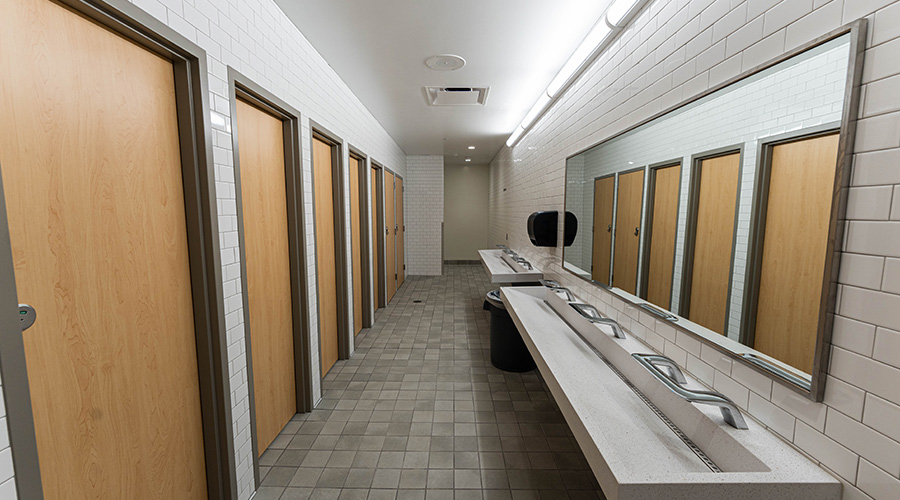Yet Another Nail
 Sometimes, it’s best to get out of the way so the facts can speak for themselves. The December 2001 Editor’s Notebook, “Laying a Myth To Rest,” dealt with the hopefully dying myth that family and socio-economic issues are more to blame than school facility conditions when it comes to student performance. In response, a reader sent along a November 2001 briefing from the Council for Educational Facilities Planners Inc. (CEFPI) entitled, “Do School Facilities Really Impact a Child’s Education?”
Sometimes, it’s best to get out of the way so the facts can speak for themselves. The December 2001 Editor’s Notebook, “Laying a Myth To Rest,” dealt with the hopefully dying myth that family and socio-economic issues are more to blame than school facility conditions when it comes to student performance. In response, a reader sent along a November 2001 briefing from the Council for Educational Facilities Planners Inc. (CEFPI) entitled, “Do School Facilities Really Impact a Child’s Education?”
The author, John B. Lyons, is a former education facilities planning manager for the U.S. Department Education. Lyons succinctly pulls together decades of findings in key areas of school facilities and provides yet another nail for the coffin containing that myth. Here is a summary of his findings:
General facility issues. The average school today is 42 years old and faces demands it was never intended to or even conceived of when the building was built. There are about 91,000 public schools today to handle an enrollment of 47 million, but in 1930, there were 262,000 schools to handle an enrollment of 25 million.
General health issues. Schools have four times more occupants per square foot than offices, and they contain a host of pollution sources, including lab chemicals, cleaning supplies, chalk dust and molds. The U.S. Environmental Protection Agency says asthma is the leading cause of school absenteeism due to chronic illness, while the American Lung Association states flatly that asthma is the leading cause of school absences.
Temperature and ventilation. “Faulty classroom temperature and air circulation are two of the worst problems in schools today,” Lyon writes. “They may be caused by poor design, but often stem from subsequent construction changes, inadequate maintenance and the fact that many schools’ HVAC systems are inefficient and outdated.”
Acoustics. In a typical school, classrooms might bombard students with three sources of noise — outdoor sources, mechanical noises within the school and noise within the classroom. Cornell University researchers found that students attending the quieter school scored as much as 20 percent higher on a word recognition test than students with noisy airplanes flying overhead.
Lighting. A new study by Heschong Mahone Group in Fairfield, Calif., finds that students in a classroom with a well-designed, adjustable skylight that diffused daylight throughout the room and reduced glare improved their learning substantially faster than students with more traditional classrooms.
Lyons ends with these thoughts: “If we can agree that public education is a primary concern of the nation, why shouldn’t we solve the problem of poor classroom condition and improve our children’s learning opportunities now? ... We need to inform ourselves about the condition of our school buildings — and appreciate the important difference they can make in educating our children.”
Related Topics:








 Sometimes, it’s best to get out of the way so the facts can speak for themselves. The December 2001 Editor’s Notebook, “Laying a Myth To Rest,” dealt with the hopefully dying myth that family and socio-economic issues are more to blame than school facility conditions when it comes to student performance. In response, a reader sent along a November 2001 briefing from the
Sometimes, it’s best to get out of the way so the facts can speak for themselves. The December 2001 Editor’s Notebook, “Laying a Myth To Rest,” dealt with the hopefully dying myth that family and socio-economic issues are more to blame than school facility conditions when it comes to student performance. In response, a reader sent along a November 2001 briefing from the 


